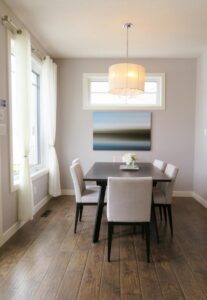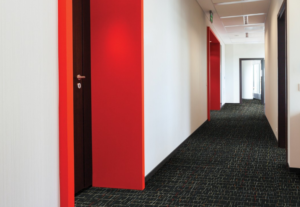A Comprehensive Guide to Flooring Lifespan: Owner-Occupied Homes vs. Rental Properties
 Flooring is not just about aesthetics; it’s a crucial aspect of our living spaces, impacting comfort, functionality, and property value. Whether you’re an owner-occupier or a landlord managing rental properties, understanding the flooring lifespan of various flooring materials is essential for budgeting, maintenance, and maximizing investment returns. In this comprehensive guide, we’ll delve into the longevity of different flooring types—carpet, tile, vinyl, hardwood, and laminate—analyzing the factors influencing their durability in both owner-occupied homes and rental properties.
Flooring is not just about aesthetics; it’s a crucial aspect of our living spaces, impacting comfort, functionality, and property value. Whether you’re an owner-occupier or a landlord managing rental properties, understanding the flooring lifespan of various flooring materials is essential for budgeting, maintenance, and maximizing investment returns. In this comprehensive guide, we’ll delve into the longevity of different flooring types—carpet, tile, vinyl, hardwood, and laminate—analyzing the factors influencing their durability in both owner-occupied homes and rental properties.
Carpet Flooring
Carpet flooring offers warmth, comfort, and versatility in design, but its lifespan varies depending on factors like fiber type, quality, and maintenance.
Owner-Occupied Homes:
In a well-maintained owner-occupied home, high-quality carpet can last between 5 to 15 years. Regular vacuuming, occasional professional cleaning, and addressing spills promptly can extend its lifespan.
Rental Properties:
In rental properties, carpets endure more wear and tear due to higher foot traffic and varying levels of maintenance. Consequently, their lifespan typically ranges from 3 to 8 years. Landlords may opt for durable, stain-resistant carpets or consider alternatives like luxury vinyl plank (LVP) for higher durability and easier maintenance.
Tile Flooring
Tile flooring, available in ceramic, porcelain, and natural stone varieties, offers durability, water resistance, and endless design options.
Owner-Occupied Homes:
When properly installed and maintained, tile flooring can last a lifetime in owner-occupied homes. Regular cleaning and sealing of grout lines are essential for preserving its appearance and structural integrity.
Rental Properties:
Tile flooring is a popular choice for rental properties due to its durability and low maintenance. With proper care, tiles can withstand heavy foot traffic and last upwards of 20 years or more. Opting for larger format tiles and darker grout colors can minimize the appearance of dirt and grime, reducing maintenance efforts for landlords.
Vinyl Flooring
Vinyl flooring, available in sheet, tile, and plank formats, is prized for its affordability, water resistance, and ease of installation.
Owner-Occupied Homes:
High-quality vinyl flooring can last between 10 to 20 years in owner-occupied homes with proper care and maintenance. Regular sweeping and occasional mopping with a mild detergent are usually sufficient to keep vinyl floors looking pristine.
Rental Properties:
Vinyl flooring is a popular choice for rental properties due to its durability and budget-friendly nature. In rental settings, vinyl flooring can last between 5 to 15 years, depending on the quality of the material and the level of tenant care. Opting for luxury vinyl plank (LVP) or luxury vinyl tile (LVT) with thicker wear layers can enhance durability and scratch resistance, making it ideal for high-traffic rental units.
Hardwood Flooring
Hardwood flooring exudes timeless elegance and adds significant value to both owner-occupied homes and rental properties.
Owner-Occupied Homes:
With proper care and maintenance, hardwood flooring can last for generations in owner-occupied homes. Regular cleaning, routine maintenance like sanding and refinishing, and addressing spills promptly are essential for preserving its beauty and structural integrity.
Rental Properties:
While hardwood flooring adds aesthetic appeal and value to rental properties, its lifespan in rental settings is typically shorter due to increased wear and tear. In rental properties, hardwood floors may last between 10 to 30 years, depending on factors like tenant turnover, maintenance practices, and the type of hardwood used. Landlords may opt for engineered hardwood flooring or wood-look alternatives like porcelain tile or luxury vinyl plank (LVP) for better durability and easier maintenance.
Laminate Flooring
Laminate flooring, composed of multiple layers of synthetic materials fused together, offers affordability, durability, and easy maintenance.
Owner-Occupied Homes:
With proper care, laminate flooring can last between 10 to 25 years in owner-occupied homes. Regular sweeping, occasional damp mopping, and avoiding excessive moisture are essential for prolonging its lifespan.
Rental Properties:
Laminate flooring is a popular choice for rental properties due to its affordability and durability. In rental settings, laminate flooring can last between 5 to 15 years, depending on factors like tenant turnover and maintenance practices. Opting for laminate flooring with thicker wear layers and moisture-resistant properties can enhance its durability and longevity in rental units.
In summary, the lifespan of flooring materials varies significantly depending on factors like usage, maintenance, and environmental conditions. While owner-occupied homes typically experience less wear and tear on flooring compared to rental properties, proper care and maintenance are essential for maximizing the lifespan of any flooring type. Landlords should consider factors like durability, maintenance requirements, and budget when selecting flooring materials for rental properties, aiming for options that offer longevity and easy maintenance to minimize replacement costs and maximize investment returns over time.
Read next: Removing Old Carpeting and Replacing it with New Carpet



